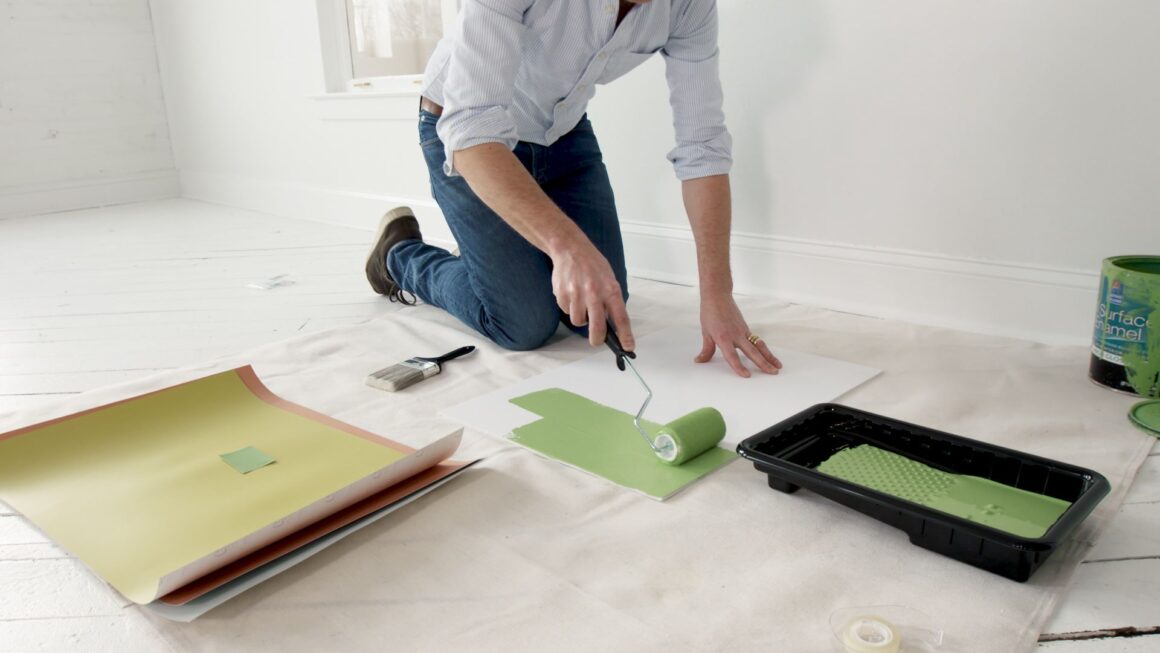Everyone wants to discover the greatest tactics and suggestions for home renovation. Should you do it yourself? Which rooms should you prioritize first? How do you go about finding the finest contractors?
We are here to help with a list of our top tips and tricks for home improvement and interior design. From painting to furniture, we have put together a list of ideas you might want to bear in mind. If you are interested in taking things to the next level, click here to find out more!
Consider the Future

Unless you are a remodeling junkie, you are unlikely to want to take on large projects every year. As a result, it is critical that you prepare for the future with your project. What would your family life be like next year? What about five years from now? In ten or twenty years’ time?
Homeowners are usually happy in their house when it can expand with their family. As a result, while planning your makeover, consider including elements such as plenty of built-in storage, so you will not be losing any room to junk.
It is also worth considering things like the way your use of the home might change over time. Annexes and self-contained portions of the room might be utilized by self-sufficient teens, family members working from home, or even elderly relatives who may require care in the future.
Prioritize Yourself
Families frequently design their homes based on what they believe a future buyer would like.
While it is important to be able to sell your home, the only person you should design your home for is yourself. 81% of people who are the happiest at home believe their homes reflect their personalities.
Before you begin working on your project, sit down and think about what you truly need. How does your family use space on a daily basis? What are your preferred trends, and what common aspects appear in your greatest inspiration images? If you are hiring an architect, make sure they are asking these questions as well.
Understand What Brings Value

Homes are not just a place to live, but they are also an investment. It is common to be concerned about the expenses associated with large renovation projects (such as constructing an extension). However, many projects can pay off in the long run, and you can frequently work with an architect to determine which changes would provide the highest return on investment.
Pay Correctly
Contrary to common assumptions, transforming your house does not require a large sum of money. Often, the best method to fund a home repair project is to use the equity in your property while also considering its future worth.
We usually advocate working with a specialist property broker rather than shopping on the high street to locate the best loan path. Property specialists will be able to estimate not only how much money you will require but also construct a financing plan that will offer you the best rate in the long run by using your newly built equity.
Selecting the Best Contractor
Unsurprisingly, the most significant specialist for your project is the contractor. After all, it will be this specialist who will make your concept a reality. As a result, when it comes to hiring this crucial tradesperson, you will want to do your homework.
Always interview at least three different contractors. It is also worth speaking with former clients, preferably without the contractor present.
Take a look at the contractor’s previous work and make sure you see recently finished projects as well as stuff from at least 18 months ago.
Check that they have the necessary insurance plans in place.
Check that their quotation covers everything – never trust an imprecise price tag!
Understand What You Should and Should Not DIY

If you have a handy touch, DIY is a wonderful approach to saving money on your project. However, not every project is designed to be finished by ordinary people. We usually advise avoiding doing these jobs yourself unless you have expert experience…
- Plumbing installation
- Electrical installation or modification
- Repairing your own roof
- Painting your house’s exterior
- Removing a chimney
- Tearing down a section of your house
- Tearing down a wall
Determine Your Personal Style
What do you want a space to feel like? Here is a tip to help you fine-tune your style: Examine your wardrobe. Do you prefer fitted clothes or those that are looser and more comfortable? Do you have a preference for particular colors or patterns? Another method for determining your style is to consider key terms that describe how you want a room to feel. Is it traditional, formal, or elegant? Playful, amusing, and inviting? Monochrome, sleek, and modern?
Take notice of design influences in many aspects of your life. Recall a hotel where you stayed or a restaurant where you dined that especially piqued your interest. This can be a great starting point for creating a unique interior space that really feels like you.
Test Your Paint

One of the most significant and cost-effective selections you can make is the color of your paint. Proper paint selections link rooms in a harmonic way. Consider the entire house. If you paint one room at a time, you risk having fragmented rooms. Consider how colors influence our emotions. Some colors may make people joyful, tranquil, or anxious.
When considering possibilities, try out actual paint colors on your walls. Examine them in natural light, in the morning, and at night. A color that works well for one project may not work well for another, and what works in your friend’s home might not work in yours.
The paint samples at the shop are a fantastic place to start, but what looks beautiful on paper may not transfer to your interior. Try a few different shades of white paint on the wall, paying specific attention to the undertones. They can have pink, blue, or yellow accents. The warmth of the light is heavily influenced by its surroundings. Reflections of greens and blues on your interior walls might be caused by plants and the sky.
Conclusion
These are just a few of the major things you might want to consider when embarking on a home renovation or interior design project. Use this as a starting point rather than an exhaustive list of instructions. If you’re interested in finding out more about interior design services, click here for more information!


